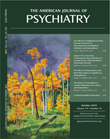Infant Delirium in Pediatric Critical Care Settings
Pathophysiology
Evaluation of Delirium in the PICU
Clinical Evaluation
Screening Instruments
Treatment
Sedation in Pediatric Critical Care
| Drug Class and Agents | Effects | Benefits | Adverse Effects |
|---|---|---|---|
| Opiates: fentanyl, morphine, hydromorphone | Analgesia, sedation, no amnesia | Fentanyl: minimal cardiovascular effects, decrease in sympathetic response, minimal pulmonary vascular resistance effects | Fentanyl: rigid chest; morphine: histamine release, hypotension |
| Benzodiazepines: midazolam, lorazepam, diazepam | Sedation, amnesia, anxiolysis, seizure control, no analgesia | Midazolam: short-acting; lorazepam and diazepam: seizure control | Lorazepam (continuous infusion): lactic acidosis, renal failure, rhabdomyolysis, mental status changes |
| Barbiturates: thiopental, methohexital, pentobarbital | Sedation, seizure control, intracranial pressure control | Seizure control, intracranial pressure control | Hypotension, apnea |
| General anesthetics: propofol | Sedation, anesthesia, seizure control, no analgesia | Short-acting, seizure control, intracranial pressure control | Hypotension, apnea, hypertriglyceridemia, propofol infusion syndromea |
| Dissociative anesthetics: ketamine | Amnesia, analgesia | Maintains heart rate, blood pressure, and respirations; bronchodilation | Increases intracranial pressure, increase in intraocular pressure, negative inotropy, emergence reactions, increase in pulmonary vascular resistance |
| α2 Adrenergic agonists: dexmedetomidine | Sedation, anxiolysis | Sedation, anxiolysis | Hypotension, hypertension, bradycardia, sinus arrest |
Treatment of Pediatric Delirium
Pharmacologic Strategies
| Drug | Dosing | Forms Available | Frequencies of Adverse Effectsb | Cardiac Effectsc |
|---|---|---|---|---|
| Haloperidol | Age 3–12 years, 0.05–0.15 mg/kg per day divided into two or three doses; dosing interval, 2–12 hours | Oral (tablet, solution), intravenous, intramuscular (immediate release and depot), subcutaneous | >30%: extrapyramidal side effects; >10%: agitation, insomnia, weight gain, hyperglycemia; >2%: sedation, anticholinergic effects, hyperlipidemia, orthostasis; <2%: blood dyscrasias,d hepatic impairment, seizure, skin reaction; rare: neuroleptic malignant syndrome (highest potency antipsychotic, thus highest risk) | Abnormal ECG, <2%; QTc prolongation, >2%; tachycardia, <2% |
| Chlorpromazine | Oral: age 6 months–12 years, 2.5–6.0 mg/kg per day, with dosing every 4–6 hours; maximum dosage: age 6 months–5 years, 50 mg/day; age 5–12 years, 200 mg/day. Intramuscular: 2.5–4 mg/kg per day, with dosing every 6–8 hours; maximum, 40 mg/day | Oral, intravenous, intramuscular | >30%: sedation, anticholinergic effects, orthostasis, weight gain, hyperglycemia, hyperlipidemia, abnormal skin pigmentation; >10%: photosensitivity, other rashes; 2%–10%: extrapyramidal side effects; <2%: agitation, blood dyscrasias,d hepatic impairment, seizures | Abnormal ECG, >30%; QTc prolongation, >2%; tachycardia, >10% |
| Risperidone | Age 5–16 years, 0.5 mg–2.5 mg/day p.o., divided into two to four doses; maximum dosage: <20 kg, 1 mg/day, 20–45 kg, 2.5 mg/ day, >45 kg, 3 mg/day | Oral (tablets, orally disintegrating tablets, solution), intramuscular (depot) | >30%: weight gain; >10%: sedation, agitation, extrapyramidal side effects (akathisia/parkinsonism > dystonia), anticholinergic effects, hyperglycemia, hyperlipidemia, orthostasis; <2%: skin reactions, blood dyscrasias,d seizures, hepatic impairment | Abnormal ECG, >2%; QTc prolongation, <2%; tachycardia, >10% |
| Olanzapine | Age 13–17 years, 2.5–10 mg/day; dosing every 12–24 hours; recommended maximum, 20 mg/day | Oral (tablets, orally disintegrating tablets), intramuscular | >30%: sedation, anticholinergic effects, weight gain, hyperlipidemia, hyperglycemia; >10%: insomnia, agitation; 2%–10%: extrapyramidal side effects (akathisia > dystonia/parkinsonism); >2%: orthostasis, hepatic impairment; <2%: skin reaction, blood dyscrasia, seizure | Abnormal ECG, <2%; QTc prolongation, <2%; tachycardia, <2% |
| Quetiapine | Age 10–17 years, 12.5–400 mg; dosing every 12–24 hours (usually 12 hours); recommended maximum, 750 mg/day | Oral (tablets; immediate release, extended release) | >30%: sedation, anticholinergic effects, hyperglycemia; >10%: agitation, orthostasis, weight gain, hyperlipidemia; >2%: extrapyramidal side effects (akathisia > parkinsonism/dystonia), hepatic impairment; <2%: seizure, skin reaction (no data for rate of blood dyscrasias with quetiapined) | Abnormal ECG, <2%; QTc prolongation, <2%; tachycardia, >2% |
| Ziprasidone | Adults, 5–100 mg/day, usually with dosing every 12 hours | Oral, intramuscular | >30%: agitation; >10%: sedation, anticholinergic effects, orthostasis; >2%: extrapyramidal side effects, weight gain, hyperglycemia; <2%: seizure, skin reaction; rare: priapism reported in adults | Abnormal ECG, >2%; QTc prolongation, <2%; tachycardia, >2% |
| Aripiprazole | Age 6–17 years, 2–15 mg/day; dosing interval, 12–24 hours | Oral (tablets, orally disintegrating tablets, solution), intramuscular | >10%: sedation, agitation; 2%–10%: extrapyramidal side effects (akathisia > parkinsonism/dystonia); >2%: anticholinergic effects, weight gain, rash; <2%: hyperglycemia, hyperlipidemia, blood dyscrasia, hepatic impairment (other: dopamine stabilizing, possibly good for hypoactive delirium) | Abnormal ECG, <2%; QTc prolongation, <2%; tachycardia, >2% |
Conclusions
Footnote
References
Information & Authors
Information
Published In
History
Authors
Funding Information
Metrics & Citations
Metrics
Citations
Export Citations
If you have the appropriate software installed, you can download article citation data to the citation manager of your choice. Simply select your manager software from the list below and click Download.
For more information or tips please see 'Downloading to a citation manager' in the Help menu.
View Options
View options
PDF/EPUB
View PDF/EPUBLogin options
Already a subscriber? Access your subscription through your login credentials or your institution for full access to this article.
Personal login Institutional Login Open Athens loginNot a subscriber?
PsychiatryOnline subscription options offer access to the DSM-5-TR® library, books, journals, CME, and patient resources. This all-in-one virtual library provides psychiatrists and mental health professionals with key resources for diagnosis, treatment, research, and professional development.
Need more help? PsychiatryOnline Customer Service may be reached by emailing [email protected] or by calling 800-368-5777 (in the U.S.) or 703-907-7322 (outside the U.S.).

